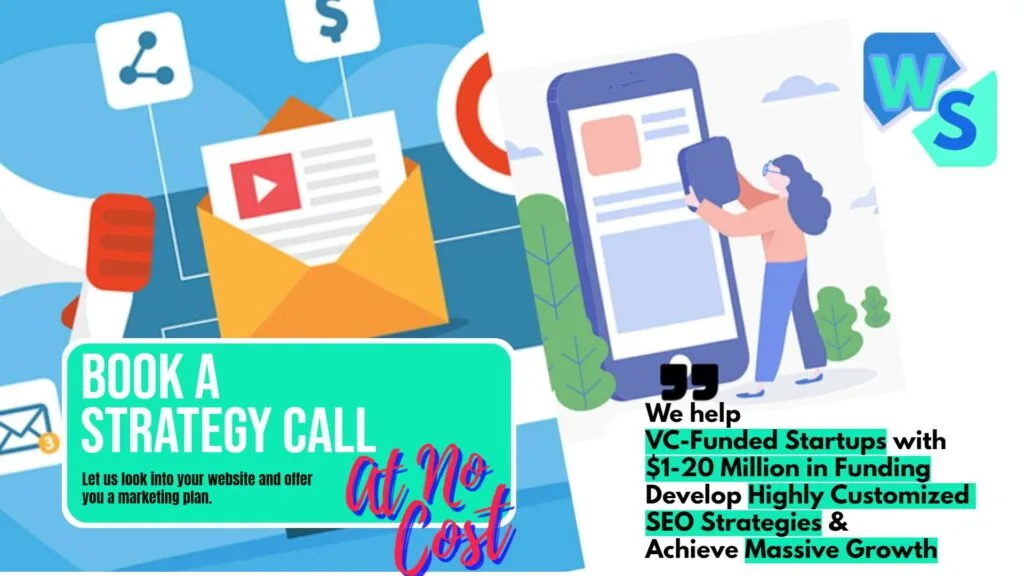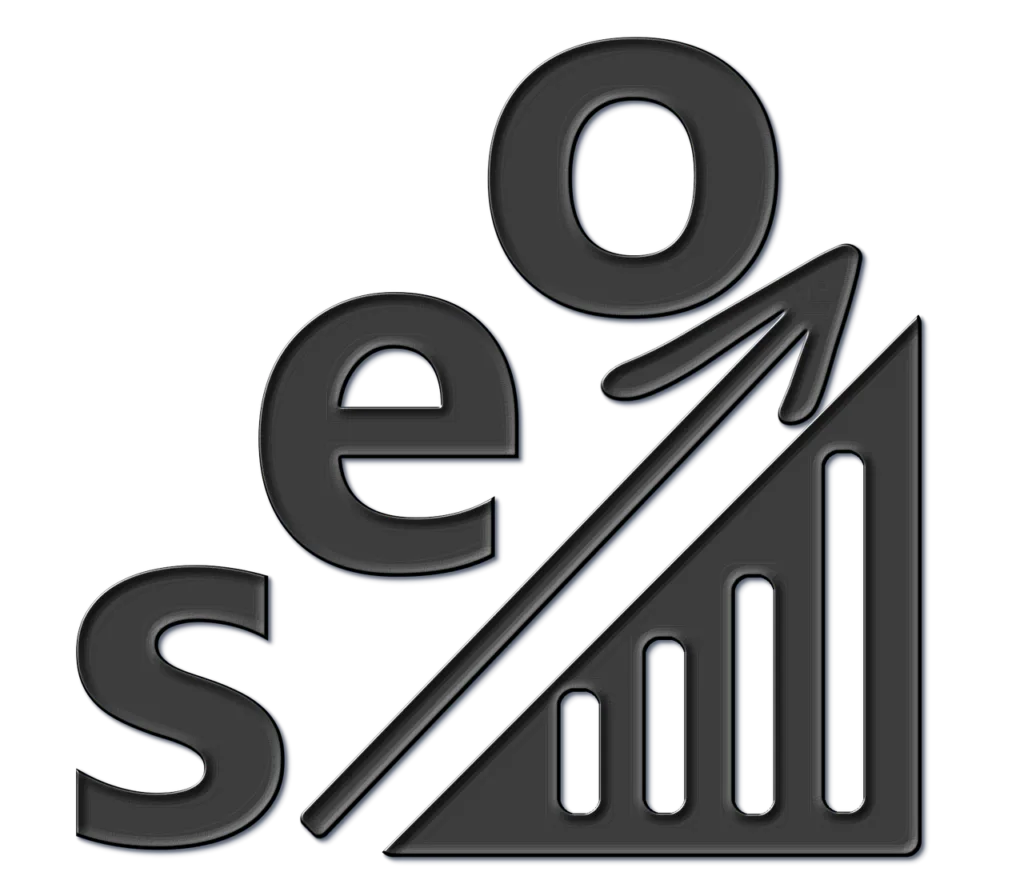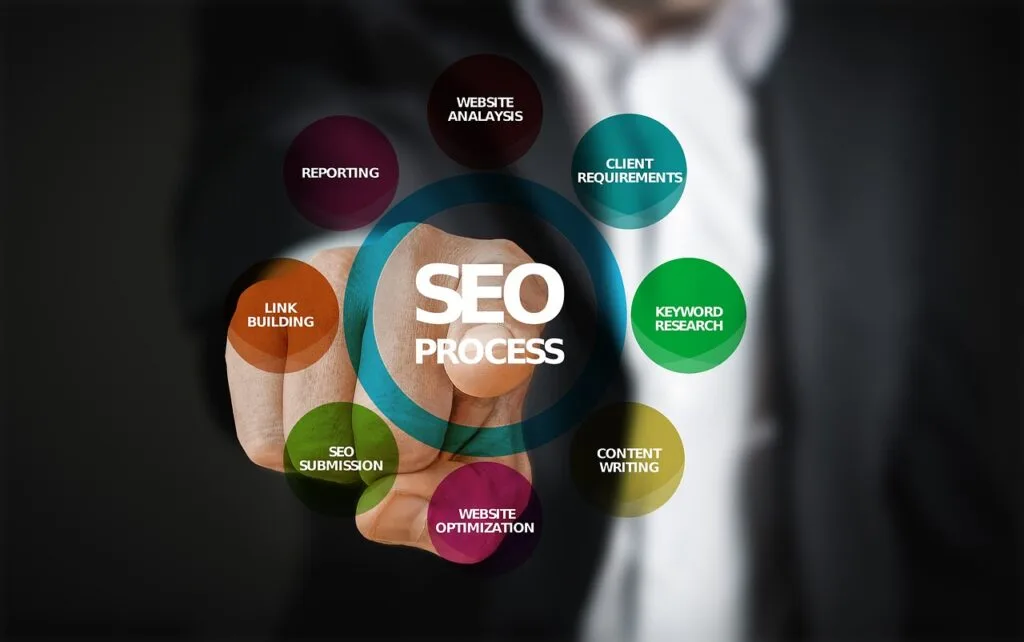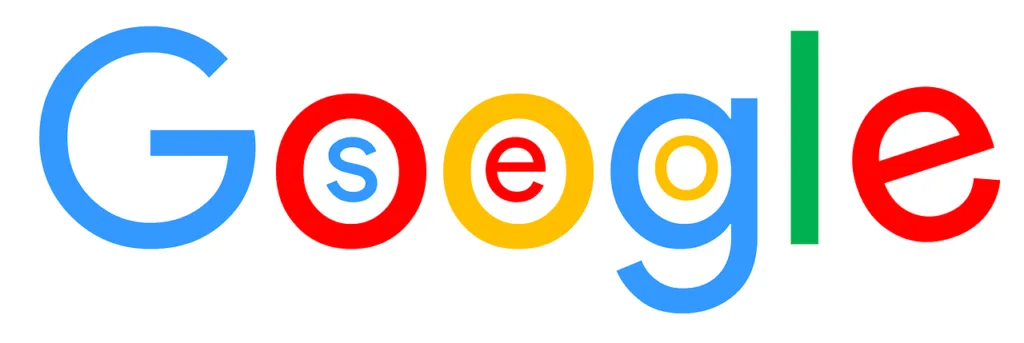This Article has been revised, edited and added to, by Poulomi Chakraborty.
- Introduction: The Intersection of Predictive Analytics and SEO in Lifesciences
- The Role of Predictive Analytics in Keyword Research and Analysis
- Predictive Keyword Generation
- Competitive Analysis with Predictive Analytics
- Forecasting Keyword Trends
- Deep Diving into Semantic Analysis for Keyword Research
- Integrating Predictive Analytics with User Intent for Keyword Optimization
- Strategic Forecasting of Keyword Evolution
- Predictive Analytics and Multifaceted Keyword Analysis
- Content Optimization and Personalization with Predictive Analytics
- Predictive Analytics-Enhanced Content Creation
- Leveraging Data for Content Personalization
- User-Centric Content Strategies
- Tailoring Content to Lifecycle Stages in Lifesciences
- Enhancing User Experience with Predictive Content Structuring
- Predictive Segmentation for Hyper-Personalization
- Real-Time Content Optimization
- Predictive Analytics for Technical SEO and Website Optimization
- Proactive Technical SEO Audits
- Data-Driven Website Speed Optimization
- Predictive Analytics for Structured Data Markup
- Optimizing Site Architecture with Predictive Insights
- Enhancing User Accessibility Through Predictive Models
- Predicting and Preempting Technical SEO Issues
- Dynamic Optimization for Mobile and Emerging Technologies
- Predictive Analytics and Voice Search Optimization for Lifesciences
- Predictive Analytics in Link Building and Outreach Strategies
- Ethical Considerations in Predictive Analytics-Enhanced SEO
- The Future of Predictive Analytics in Lifesciences SEO
- Conclusion
The lifesciences industry is at the forefront of innovation and discovery, and the digital landscape is evolving rapidly alongside it. In this comprehensive guide, we will explore the convergence of predictive analytics and SEO trends in lifesciences businesses. From understanding the fundamentals to delving into advanced predictive analytics strategies, this article will provide lifesciences professionals, digital marketers, and curious minds with valuable insights and actionable knowledge.
Introduction: The Intersection of Predictive Analytics and SEO in Lifesciences

Understanding Predictive Analytics
Predictive analytics is a branch of advanced analytics that utilizes historical data, statistical algorithms, and machine learning techniques to identify the likelihood of future outcomes. In the context of lifesciences, predictive analytics leverages vast datasets from clinical trials, research studies, patient records, and other sources to make informed predictions about disease trends, drug responses, and treatment outcomes.
Relevance and Impact on SEO
The relevance of predictive analytics in lifesciences extends beyond clinical and research applications. It has a profound impact on the digital presence of lifesciences businesses, especially when combined with SEO strategies. Predictive analytics helps organizations anticipate trends, user behavior, and search engine algorithms, enabling them to optimize their digital content, enhance user experiences, and stay ahead in the competitive online landscape.
Strategic Integration of Predictive Analytics and SEO
The convergence of predictive analytics and search engine optimization (SEO) in the lifesciences industry represents a transformative shift in how startups can leverage big data and digital visibility to gain a competitive edge.
For startups in this field, integrating predictive analytics with SEO strategies is not just about enhancing online visibility but also about creating a data-driven framework that forecasts industry trends and customer needs with remarkable accuracy.
Predictive analytics enables lifesciences startups to analyze and utilize vast amounts of data from clinical trials, research publications, and real-world patient interactions. This deep well of data, when properly harnessed, allows these companies to foresee emerging trends in diseases, treatments, and patient care needs.
By integrating this foresight with SEO strategies, startups can ensure that their digital content is not only visible but also highly relevant to the current and anticipated needs of their target audiences.
Crafting Predictive SEO Strategies
To effectively harness the power of predictive analytics, lifesciences startups need to develop a clear strategic plan that aligns their SEO efforts with their broader business goals. This involves identifying key performance indicators (KPIs) that reflect both the impact of SEO and the insights gained from predictive analytics.
For example, a startup might track the increase in web traffic in relation to content that addresses newly emerging medical treatments or patient care methodologies predicted by their data analytics.
Moreover, these startups should focus on developing SEO content that addresses the specific queries and needs of their target audience, which predictive analytics can help identify.
This could mean creating in-depth articles, blog posts, or even video content that speaks directly to the emerging concerns and interests of healthcare providers and patients, such as innovative treatment options or advances in medical technology.
Enhancing User Engagement Through Predictive Personalization
Incorporating predictive analytics into SEO strategies allows lifesciences startups to personalize user experiences to an unprecedented degree. By analyzing user behavior and engagement patterns, startups can tailor their website and content to better meet the individual needs of their visitors.
This approach not only improves user engagement but also significantly boosts the efficacy of the SEO efforts by increasing the time spent on the site and reducing bounce rates.
For instance, by predicting the topics or types of content that certain segments of the audience will find most engaging, startups can dynamically present personalized content recommendations. This not only enhances the user experience but also solidifies the startup‘s reputation as a leading source of cutting-edge information in the lifesciences sector.
Predictive Analytics for Smarter SEO Investment
Startups in the lifesciences industry often operate within tight budget constraints, making it crucial to allocate resources efficiently. Predictive analytics provides a strategic advantage by identifying which SEO tactics yield the best return on investment (ROI).
By analyzing past SEO initiatives and their outcomes, predictive models can help startups forecast the impact of different strategies, allowing them to invest in the most effective tactics that drive real results.
Furthermore, predictive analytics can streamline SEO by identifying underperforming content areas and suggesting improvements, thus ensuring that every dollar spent on SEO contributes positively to the startup’s overall goals.
The Role of Predictive Analytics in Keyword Research and Analysis

Keywords are the foundation of SEO, and predictive analytics is transforming how lifesciences businesses discover, analyze, and utilize keywords for enhanced search engine rankings. Here’s how predictive analytics is reshaping keyword research and analysis:
Predictive Keyword Generation
1. Data-Driven Insights: Predictive analytics models analyze vast datasets, including research papers, clinical trial data, and patient records, to identify keywords that are likely to gain significance in the future. This empowers lifesciences businesses to target emerging topics and trends proactively.
2. Trend Prediction: Predictive analytics algorithms forecast which keywords are likely to trend in the lifesciences sector. This enables businesses to create content and optimize their websites to capitalize on upcoming search trends.
3. Clinical Trial Keyword Research: For lifesciences companies involved in clinical trials, predictive analytics can analyze trial data to uncover relevant keywords, helping in the optimization of trial-related content and patient recruitment efforts.
Competitive Analysis with Predictive Analytics
1. Competitor Keyword Analysis: Predictive analytics tools can assess the keyword strategies of competitors in the lifesciences field. By analyzing their content and ranking trends, businesses can identify keyword opportunities and gaps in their own strategies.
2. Forecasting Keyword Performance: Predictive analytics models can forecast the performance of specific keywords, helping businesses prioritize their SEO efforts and allocate resources more effectively.
3. Data-Backed Decision Making: Predictive analytics provides lifesciences companies with data-backed insights, allowing them to make informed decisions regarding keyword selection and optimization.
Forecasting Keyword Trends
1. Emerging Disease Keywords: Predictive analytics can identify emerging diseases or health concerns by analyzing search patterns and medical research. This information is invaluable for lifesciences businesses developing treatments or healthcare solutions.
2. Drug and Treatment Keywords: For pharmaceutical companies, predictive analytics can forecast which drug or treatment-related keywords will become more relevant in the future. This helps in preparing marketing and SEO strategies accordingly.
3. Niche Keyword Discovery: Predictive analytics can uncover niche keywords that may not be apparent through traditional keyword research methods, allowing lifesciences businesses to target highly specific audiences.
Deep Diving into Semantic Analysis for Keyword Research
In the rapidly advancing field of lifesciences, the application of predictive analytics to keyword research goes beyond simple trend forecasting and enters the realm of semantic analysis.
Semantic analysis empowers startups to not only identify keywords but also understand the context in which these keywords are used, which significantly enhances the relevance and effectiveness of SEO strategies.
By analyzing the relationship between words and phrases within medical and scientific contexts, predictive analytics can help startups uncover underlying trends and themes that might not be immediately apparent through conventional keyword research methods.
This strategic approach allows startups to develop content that addresses not just the surface-level information but also the deeper needs and questions of their audience.
For example, if predictive analytics identifies a growing interest in personalized medicine among healthcare providers, a startup might create content that not only discusses personalized medicine in general but also delves into specific aspects like genetic markers, patient-specific drug responses, and the latest technological advancements supporting personalized treatments.
Integrating Predictive Analytics with User Intent for Keyword Optimization
Understanding user intent is crucial for effective keyword optimization, and predictive analytics enhances this understanding by analyzing how different user segments interact with search engines.
Startups can leverage this data to align their keyword strategies with the actual intent behind searches, which can vary significantly across different user demographics and stages of the patient journey.
For instance, a startup might find that healthcare professionals search for treatment options in a more technical language, focusing on drug efficacy and trial results, while patients might use more accessible language focusing on symptoms and side effects.
By tailoring keyword strategies to these distinct patterns, startups can more effectively reach and engage their target audiences.
Strategic Forecasting of Keyword Evolution
Predictive analytics also enables startups to forecast the evolution of keywords over time, providing a strategic advantage in content planning. By predicting how certain keywords will develop in popularity and relevance, startups can create evergreen content that remains valuable and effective for SEO long into the future.
This proactive approach to content creation helps startups avoid the pitfalls of short-lived keyword trends, instead investing in content that builds a lasting foundation for their online presence.
For example, if predictive analytics suggests that the interest in telehealth will continue to rise, a startup can focus on creating comprehensive resources on various telehealth services, legal considerations, technological requirements, and patient privacy issues. This strategic content planning ensures that the startup remains a step ahead in the competitive SEO landscape.
Predictive Analytics and Multifaceted Keyword Analysis
Finally, predictive analytics can enhance keyword research by providing a multifaceted analysis of keywords that considers various factors such as geographical relevance, language variations, and cross-disciplinary appeal. This comprehensive approach allows startups to refine their SEO strategies to be more inclusive and targeted.
For instance, a startup might use predictive analytics to identify regional variations in the terminology used to describe a particular medical condition or treatment. By incorporating these regional terms into their SEO and content strategies, startups can ensure that they are reaching the widest possible audience while maintaining high relevance and engagement.
By embedding predictive analytics deeply into the process of keyword research and analysis, lifesciences startups not only optimize their content for search engines but also ensure that it resonates deeply with their target audiences, thus driving more effective engagement and conversions. This strategic integration of technology and marketing intelligence forms the backbone of a robust digital presence in the competitive field of lifesciences.
Content Optimization and Personalization with Predictive Analytics

Predictive analytics not only revolutionizes how lifesciences businesses discover keywords but also how they create and optimize content. Here’s how predictive analytics is transforming content strategies in lifesciences SEO:
Predictive Analytics-Enhanced Content Creation
1. Data-Driven Content Generation: Predictive analytics models analyze a vast amount of lifesciences data, including clinical trials, research findings, and patient data, to generate data-driven content. This content is not only informative but also highly relevant to current healthcare trends.
2. Trend Analysis: Predictive analytics identifies emerging healthcare trends and topics by analyzing search patterns, medical literature, and clinical data. This data informs lifesciences companies’ content creation strategies, allowing them to produce timely and valuable information.
3. Personalized Content: Predictive analytics helps in tailoring content to specific user segments. By analyzing user behavior and preferences, lifesciences businesses can create personalized content that resonates with their target audience.
Leveraging Data for Content Personalization
1. User Behavior Analysis: Predictive analytics models track user behavior on lifesciences websites, identifying patterns and preferences. This data informs content recommendations and personalization strategies.
2. Dynamic Content Delivery: Lifesciences websites can use predictive analytics to dynamically adjust content based on user interactions. This creates a personalized and engaging experience for visitors.
3. Multilingual Content: Predictive analytics can analyze language preferences and user locations, enabling lifesciences companies to provide content in multiple languages for a global audience.
User-Centric Content Strategies
1. User Intent Analysis: Predictive analytics models interpret user intent behind search queries, ensuring that content aligns with what users are looking for. This enhances the user experience and SEO performance.
2. Content Recommendations: Predictive analytics-driven systems recommend related content to users, increasing their engagement and time spent on lifesciences websites.
3. Adaptive Content Strategies: Lifesciences businesses can use predictive analytics to adapt their content strategies based on user feedback and changing search trends. This agility ensures that content remains relevant and effective.
Tailoring Content to Lifecycle Stages in Lifesciences
One strategic application of predictive analytics in content optimization involves aligning content with the specific lifecycle stages of drugs, treatments, or medical technologies.
For lifesciences startups, understanding where a product or service stands in its lifecycle—from research and development through clinical trials to market release and post-market analysis—can inform highly targeted content strategies.
Predictive analytics can help determine the information needs at each stage, enabling startups to craft content that addresses those needs precisely.
For instance, during the early stages of a new treatment’s development, content might focus on explaining the scientific research backing the treatment, its potential benefits, and the problems it aims to solve.
As the treatment moves into clinical trials, content can shift towards reporting trial progress, preliminary results, and participant testimonials. Once the treatment is available on the market, the focus can then move to user guides, case studies, and long-term efficacy reports.
This lifecycle-based content strategy ensures that all communications are timely, relevant, and useful, enhancing both SEO and user engagement.
Enhancing User Experience with Predictive Content Structuring
Another innovative approach enabled by predictive analytics is the dynamic structuring of content based on user behavior and engagement metrics. By analyzing how users interact with different types of content, predictive models can help startups structure their content offerings in a way that maximizes engagement and retention.
This might involve changing the order of articles on a blog, modifying the layout of newsletter content, or dynamically altering the interface of a mobile app based on user preferences and behaviors.
For example, if analytics indicate that users prefer video content over written articles for certain topics, a startup can adjust its content strategy to feature more video content prominently.
Similarly, if users tend to engage more deeply with interactive content such as quizzes or decision tools, these elements can be introduced more frequently across the platform.
Predictive Segmentation for Hyper-Personalization
Predictive analytics extends beyond traditional demographic or psychographic segmentation, enabling hyper-personalization of content. This involves using machine learning models to analyze complex user data sets, including past interactions, transaction histories, and even real-time behavior, to segment users more precisely and tailor content accordingly.
For a lifesciences startup, this might mean developing different content versions for various segments, such as patients, healthcare providers, or policy makers, each optimized for the specific concerns and information needs of these audiences.
A patient might receive content focused on treatment options and lifestyle advice, a healthcare provider might see more technical data about drug mechanisms and trial results, and a policymaker might get content centered around regulatory issues and public health impacts.
Real-Time Content Optimization
Leveraging real-time data for content optimization represents a frontier in the use of predictive analytics for SEO. This approach uses ongoing data streams to continuously refine and optimize content, ensuring that it remains highly relevant and engaging.
Real-time optimization can include changes to keywords, updates to metadata, and even alterations to content based on trending topics or breaking news.
For lifesciences startups, real-time content optimization could be crucial during public health emergencies or when new research findings are published. Being able to quickly update content to reflect new data ensures that the startup remains at the forefront of the industry, providing valuable, up-to-date information that meets the immediate needs of its audience.
By employing these advanced strategies, lifesciences startups can leverage predictive analytics not just to enhance their content’s appeal and relevance, but also to establish a strong, enduring connection with their audience, ultimately driving more meaningful engagements and conversions.
This strategic use of technology transforms basic content optimization into a powerful tool for market differentiation and business growth.
Predictive Analytics for Technical SEO and Website Optimization

Technical SEO forms the bedrock of a well-optimized lifesciences website. Predictive analytics is now playing a significant role in automating technical SEO tasks, ensuring that websites are both search engine-friendly and user-friendly. Here’s how predictive analytics is transforming technical SEO and website optimization:
Proactive Technical SEO Audits
1. Automated Audits: Predictive analytics-driven tools can conduct comprehensive technical SEO audits of websites. These audits identify issues such as broken links, crawl errors, and duplicate content more efficiently than manual checks.
2. Predictive Analysis: Predictive analytics not only identifies issues but also predicts their impact on SEO. It can prioritize critical issues that need immediate attention, ensuring a proactive approach to technical SEO.
3. Continuous Monitoring: Predictive analytics can continuously monitor a website’s technical health, providing real-time alerts and recommendations for improvement. This ensures that websites remain optimized over time.
Data-Driven Website Speed Optimization
1. Page Load Speed: Predictive analytics algorithms analyze website performance data and user behavior to identify elements that slow down page loading times. This information helps web developers optimize page speed for better SEO and user experience.
2. Image Compression: Predictive analytics-driven image compression tools reduce image file sizes without sacrificing quality, improving website speed and SEO performance.
3. Content Delivery Networks (CDNs): Predictive analytics helps optimize CDNs for faster content delivery to users, especially important for lifesciences websites with large datasets.
Predictive Analytics for Structured Data Markup
1. Rich Snippets: Predictive analytics assists in implementing structured data markup for lifesciences websites, enabling rich snippets in search results. These snippets can display valuable information directly in search results, enhancing click-through rates.
2. Voice Search Compatibility: Predictive analytics-driven structured data markup ensures that content is voice search-friendly, catering to the growing trend of voice-activated searches in the lifesciences sector.
3. Mobile Optimization: Predictive analytics helps optimize websites for mobile devices, ensuring that they load quickly and function seamlessly on smartphones and tablets. Mobile-friendliness is a critical SEO factor.
Optimizing Site Architecture with Predictive Insights
For lifesciences startups, the architecture of their website is a foundational element that affects both user experience and search engine optimization. Predictive analytics can play a crucial role in structuring a website more effectively by predicting user paths and behavior patterns.
This insight allows startups to design a site architecture that not only facilitates easier navigation but also aligns with the ways users are most likely to interact with the content, enhancing both engagement and SEO performance.
For example, predictive models can identify the most commonly accessed pages and suggest an architecture that reduces the number of clicks required to reach these pages. Additionally, it can forecast changes in user behavior based on trends, enabling startups to continuously adapt their site structure to meet evolving user needs.
Enhancing User Accessibility Through Predictive Models
Accessibility is increasingly critical, not just for user inclusivity but also for SEO. Predictive analytics can help ensure that websites are accessible to all users, including those with disabilities, by predicting potential navigational challenges and suggesting enhancements.
This can include adjustments to color contrast ratios, font sizes, and interactive elements that meet or exceed ADA compliance standards. By proactively addressing these aspects, startups can improve site accessibility and usability, which are significant factors in SEO rankings.
For instance, predictive analytics can analyze user interaction data to identify elements that frequently confuse or inhibit users with specific disabilities. This data can then guide web developers in creating more intuitive layouts and interactive features that cater to a broader audience.
Predicting and Preempting Technical SEO Issues
Technical SEO encompasses a wide range of backend elements that impact how well a site performs in search engines. Predictive analytics can revolutionize how startups preempt and resolve technical SEO issues by identifying potential problems before they affect site performance.
This might include predicting potential server load issues that could cause site slowdowns during high traffic periods, or identifying upcoming browser updates that might make certain site features obsolete or non-functional.
By addressing these issues proactively, lifesciences startups can ensure their websites remain fast, functional, and fully optimized for search engine algorithms, which frequently update and change.
Maintaining a technically sound website not only helps with rankings but also improves user satisfaction, which can lead to higher engagement and conversion rates.
Dynamic Optimization for Mobile and Emerging Technologies
With the increasing importance of mobile devices in user access patterns, especially in the healthcare field, mobile optimization is critical. Predictive analytics can help lifesciences startups optimize their websites for mobile by analyzing user behavior patterns on different devices and adapting content and layout accordingly.
Additionally, predictive analytics can forecast emerging technology trends, such as the rise of augmented reality (AR) or virtual reality (VR) in healthcare education and marketing. Startups can use these insights to prepare their websites to support these technologies, ensuring that they stay ahead of the curve in providing engaging and innovative user experiences.
Predictive analytics offers a strategic advantage in technical SEO by not only enhancing current optimization efforts but also by providing insights that prepare lifesciences startups for future challenges and opportunities.
Through its implementation, startups can ensure their websites are robust, responsive, and ready to meet both current and future needs of their users and the dynamics of search engine algorithms.
Predictive Analytics and Voice Search Optimization for Lifesciences

Voice search is becoming increasingly prominent in the lifesciences industry, and predictive analytics is a key enabler of effective voice search optimization. Here’s how predictive analytics is shaping voice search optimization in the lifesciences sector:
The Rise of Voice Search in Lifesciences
1. Growing User Adoption: Voice-activated devices and voice search applications are becoming more prevalent among healthcare professionals, researchers, and patients. Voice search offers a convenient way to access medical information and healthcare resources.
2. Conversational Queries: Voice search queries tend to be more conversational and natural in tone. Users ask questions in a way they might speak to a healthcare provider, making it crucial to optimize content for this conversational style.
3. Mobile Voice Search: With the increasing use of mobile devices in healthcare, voice search is frequently used for on-the-go information retrieval, making it essential for lifesciences businesses to optimize for mobile voice search.
Predictive Analytics for Voice Search Trends
1. Predictive Query Analysis: Predictive analytics models can analyze historical voice search queries to identify patterns and trends. This data can help lifesciences businesses anticipate the types of questions users are likely to ask through voice search.
2. Semantic Search Optimization: Predictive analytics-driven SEO strategies can focus on semantic search, understanding the intent and context behind voice search queries. This enables lifesciences companies to provide more accurate and relevant answers.
3. Featured Snippets Optimization: Predictive analytics can identify opportunities to optimize content for featured snippets, which are often read aloud as answers to voice search queries. Securing featured snippets can significantly enhance visibility in voice search results.
Voice-Enabled Chatbots and SEO
1. Voice-Activated Healthcare Assistants: Predictive analytics-driven voice-enabled chatbots and virtual healthcare assistants can interact with users through voice commands. They can answer medical questions, provide information on treatments, and even schedule appointments, enhancing user engagement and SEO performance.
2. Conversational Content Creation: Predictive analytics assists in creating conversational content that aligns with voice search queries. This content is not only SEO-friendly but also caters to the natural language used in voice search.
3. Voice Analytics: Predictive analytics tools track and analyze voice search queries, providing insights into user behavior and preferences. This data guides lifesciences companies in refining their content and voice search strategies.
Optimizing for voice search is not just a matter of staying current; it’s about ensuring that your lifesciences website remains accessible to a growing user base that relies on voice-activated devices for information. Predictive analytics makes this optimization more precise and effective.
Predictive Analytics in Link Building and Outreach Strategies

Link building remains a critical component of SEO, and predictive analytics is reshaping and optimizing this process for lifesciences companies. Here’s how predictive analytics is transforming link building and outreach strategies:
Data-Driven Outreach and Relationship Building
1. Contact Identification: Predictive analytics tools can automatically identify and verify contact information for potential link-building prospects, saving time and effort in the outreach process.
2. Personalization: Predictive analytics enables personalized outreach by analyzing prospect data and tailoring messages to specific individuals or organizations. Personalized outreach is more likely to yield positive results.
3. Automated Follow-ups: AI-driven email automation tools powered by predictive analytics can send follow-up messages and reminders, increasing the likelihood of responses and link placements.
Predictive Link Building Strategies
1. Predictive Analytics Models: Advanced predictive analytics models can analyze vast datasets to predict which websites or publications are likely to link to specific lifesciences content. This data-driven approach helps companies focus their efforts on high-yield opportunities.
2. Content Gap Analysis: Predictive analytics can identify gaps in existing content that present opportunities for creating valuable resources that are likely to attract backlinks. This ensures that content aligns with the interests of potential linking domains.
3. Competitor Backlink Analysis: Predictive analytics tools can analyze competitor backlink profiles to identify potential link-building prospects. This data can inform your strategy and help you gain an edge in the lifesciences industry.
Predictive Analytics for Content Promotion
1. Content Amplification: Predictive analytics helps identify the most effective channels for content promotion, ensuring that your lifesciences content reaches a broader and more relevant audience.
2. Social Media Engagement: AI-driven social media tools, integrated with predictive analytics, can schedule and optimize posts, increasing engagement and driving traffic to your content.
3. Influencer Identification: Predictive analytics assists in identifying relevant influencers in the lifesciences sector who can amplify your content through their networks, attracting valuable backlinks.
Predictive analytics is not just about automating link-building tasks; it’s about making these strategies more data-driven, efficient, and effective. Lifesciences companies can benefit from predictive analytics-powered link-building solutions to enhance their SEO efforts.

Related: Check out our free SEO suite

Ethical Considerations in Predictive Analytics-Enhanced SEO
As predictive analytics gains prominence in SEO strategies, it’s vital to address the ethical considerations that come with these advancements. Here are the key ethical considerations in predictive analytics-enhanced SEO for the lifesciences sector:
Data Privacy and Security
1. User Data Protection: Predictive analytics relies on vast datasets, including user behavior and search history. Lifesciences companies must ensure that user data is handled with the utmost care and in compliance with data protection regulations like GDPR and HIPAA.
2. Consent and Transparency: Users should be informed about how their data is being used for predictive analytics-enhanced SEO. Transparency and obtaining proper consent are essential for ethical data collection.
Algorithmic Bias and Fairness
1. Algorithmic Bias: Predictive analytics algorithms can inadvertently perpetuate biases present in training data. In the lifesciences sector, this could lead to biased search results or content recommendations. Companies must actively work to identify and mitigate algorithmic bias.
2. Fair Representation: Lifesciences SEO should aim to represent diverse voices and perspectives. Predictive analytics can help identify gaps in representation and ensure that content and search results are inclusive.
Transparency and Accountability
1. Explainable AI: As predictive analytics systems become more complex, it’s essential to maintain transparency in how they operate. Users and stakeholders should have access to information on how predictive analytics influences search rankings and content recommendations.
2. Accountability for Errors: Predictive analytics is not infallible. Lifesciences companies must take responsibility for any errors or inaccuracies that arise from predictive analytics-enhanced SEO strategies.
User Empowerment
1. User Control: Lifesciences websites should offer users control over their interactions with predictive analytics-driven systems. This includes the ability to opt out of personalized content recommendations or data collection.
2. Ethical AI Use Cases: Lifesciences companies should consider the ethical implications of predictive analytics applications beyond SEO, such as in healthcare decision support or patient diagnostics.
Addressing these ethical considerations is not only a matter of compliance but also essential for building trust with users, stakeholders, and the broader lifesciences community. Ethical predictive analytics-enhanced SEO practices align with the principles of responsible AI development and contribute to a more inclusive and user-centered digital environment.
The Future of Predictive Analytics in Lifesciences SEO

As we conclude our exploration of predictive analytics and its impact on SEO in the lifesciences sector, it’s essential to consider the future. Here’s a glimpse of what the future holds for predictive analytics in lifesciences SEO:
Advanced Predictive Models
Predictive analytics models will continue to advance, becoming more accurate and sophisticated. Lifesciences companies will rely on these models to predict search trends, user behavior, and content performance with greater precision.
AI-Powered Content Generation
The integration of AI with predictive analytics will enable lifesciences companies to automate content creation further. AI-driven content generation tools will produce informative and data-driven content that aligns with predictive SEO strategies.
Enhanced Personalization
Personalization will be taken to new heights, with predictive analytics driving highly tailored user experiences. Websites will adapt in real-time based on user preferences, behavior, and even health conditions, ensuring content relevance.
Ethical AI and Responsible SEO
The lifesciences industry will prioritize ethical AI use in SEO. Companies will adopt responsible practices, ensuring transparency, data privacy, and fairness in predictive analytics-driven strategies.
Voice Search and Healthcare AI
Voice search will become even more prevalent in healthcare, and predictive analytics will play a central role in optimizing content for voice-activated devices. Healthcare AI systems powered by predictive analytics will provide valuable medical information via voice interactions.
Predictive Analytics for Drug Discovery
Predictive analytics will aid in drug discovery by analyzing vast datasets to predict the efficacy and safety of potential drugs. This data-driven approach will accelerate the development of life-saving medications.
Conclusion
As the lifesciences sector continues to evolve, the integration of predictive analytics with SEO strategies offers an unprecedented opportunity for startups to not only capture but also anticipate market needs and changes. This forward-looking approach allows startups to position themselves strategically within the competitive digital landscape, where staying ahead means understanding not just current trends but also predicting future shifts in technology, patient care, and industry standards.
The adoption of predictive analytics empowers lifesciences companies to create more targeted, effective, and engaging content, optimize their websites technically, and streamline their marketing efforts. It ensures that their digital presence is not only aligned with current search engine algorithms but is also adaptable to upcoming changes and user behaviors.
In embracing these advanced analytical capabilities, lifesciences startups are not just improving their SEO outcomes but are also setting a foundation for sustained growth and innovation. As predictive analytics becomes more sophisticated, its integration into SEO and digital marketing strategies will continue to expand, proving essential for those looking to lead in the dynamic field of lifesciences.
Read Next
- Beginner’s Guide: How to Conduct Effective Keyword Research
- The Ultimate Guide to Keyword Research for Startup SEO
- 9 UX Design Principles that Boosts SEO for Finance Websites
- How to Leverage Social Media Reviews for SEO
- Facebook SEO for Financial Services: Our Take!



















Comments are closed.